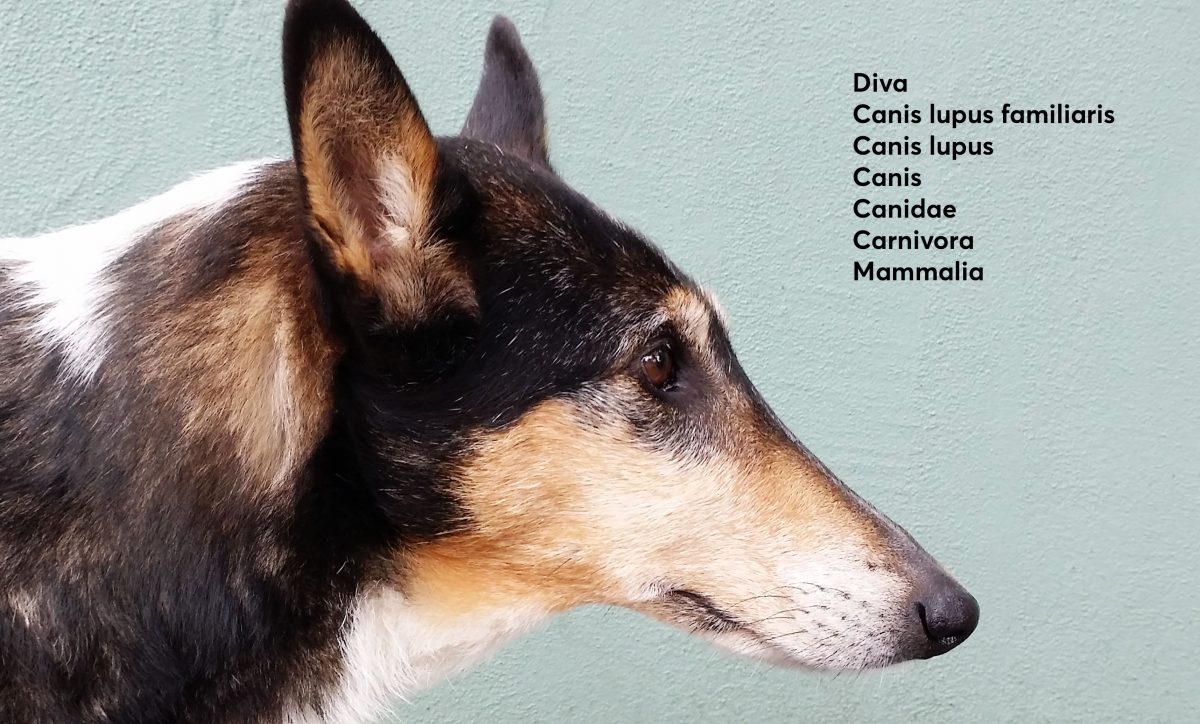Q: My dog does [ insert favourite “misbehaviour” here ]. Is she trying to be dominant?
A: See last question.
Q: My dog does what he wants. He doesn’t respect me. How can I become a better leader?
A: See last question.
Q: How can I maintain a pack-hierarchy in my multi-dog household, so everyone knows their place?
A: See last question.
Q: Why use treats? Shouldn’t my dog just do what I want because I say so?
A: See last question.
Q: If I don’t punish my dog when he behaves aggressively, doesn’t that mean he’ll do it again?
A: See last question.
Q: My dog’s behaviour is a problem for me. What can I do about this?
A: Finally, you’re asking the right question.
Your dog is a sub-species (Canis lupus familiaris) of the gray wolf (Canis lupus) and belongs to the family of Canidae and the order of Carnivora.
I’m not telling you this to boast about my knowledge of taxonomy (anyone can Google this), but because we really do need frequent reminders that our dogs are not human. I’m quite sure, having a bear or a gorilla in the house wouldn’t require repeated reality checks, but with dogs we seem to habitually forget what they really are.
Your dog is a dog and will always behave like a dog, no matter how much you wish it were otherwise. Behaving like a typical member of one’s own species should not be a punishable offence.
Now, I’d assume that bringing a dog into your home meant you were looking for a companion. Dogs are really good at that. But because they are still dogs, we usually need to take some action to make sure they don’t wreck the furniture, kill the cat, alienate our friends, offend the neighbours and attract lawsuits.
If you have recently adopted a puppy, you need the same superhuman patience as new parents. And you have the unnerving responsibility to protect and nurture a new life.
Can you imagine a parent placing a shock collar on their baby or pressing their little body to the ground until they stop crying? Pushing their face into their own poo because they had an accident during nappy change? How about yanking a toddler by a neck chain because they toddled in the “wrong” direction? Or maybe a bit of a whack under the chin or a knee in the chest or some yucky substance sprayed in their face? How else does that stubborn toddler learn to “behave”? How else are they going to respect you as their leader? And, if they are really rebellious, then we just strangle them until they faint or pummel them until they curl up in the corner. That’ll teach them.
We do all of these things to dogs—animals who are no more able to comprehend what we expect from them than a 1- or 2-year old child—and no one calls the cops.
No matter what age, breed or size your dog is, no matter what task you might assign to them, there is never any need or justification to make them fear you.
I know it is not the most brutal methods I have to steer you away from. You don’t want to hurt your dog. But I want to hold up a big warning sign that when you enter the dark foggy forest of dog training you have a high chance of doing a Hansel & Gretel. The advice you will mostly come across is drawn from last century myths and the avalanche of books that have been written spreading those myths. The language may have changed, and some methods are less overtly medieval in nature. But packaging a house of horror in gingerbread doesn’t make it any less dreadful or dangerous, just more insidious. Better to avoid the witch in the first place.
The risk of being conned does not only come from external sources. What about your own tendency to blame your dog for having human intentions? Stubborn, disobedient, naughty, rebellious, dominant—how many times have you thought your dog “misbehaves on purpose”? It is not their brains that give rise to those thoughts, it’s yours. Funnelling human thoughts into canid brains has only ever led to confusion, frustration and misery—on both sides of the relationship.
It may take a while to rid yourself of this, but you can safely drop the notion that you need to be the alpha dog or even a leader. Your dog is not going to usurp you. They are not lying in wait for you to drop your guard. Your dog is really just trying to figure out how they can get you to hand over some food or throw a ball or even just say a few nice words and scratch them behind the ears. That’s all they need to be happy.
Fortunately, more and more people who live and work with dogs are done with folk knowledge and “dog training gurus” and are turning to fear-free and cooperative teaching and learning. Please join us on this exciting journey. This is the future and it’s already here.
The science of animal learning and behaviour gives us all we need to create a functioning household of individuals, even if one or more of those individuals are not human.
With a puppy under around 16 weeks of age your biggest advantage is the chance of prevention. Put all your time and energy into giving your youngster a ton of positive experiences, so they feel safe in this world. Go overboard with teaching them that nothing bad comes from human hands, that all the people and animals and things around them are no threat to them. Handle them with care, like you would a baby, but let them explore the world—under your gentle guidance and armed with treats—like they were a toddler. You may safe your dog from a lifetime of anxiety and yourself from the fallout.
The positive experiences shouldn’t stop once your puppy has bumbled their way into adolescence and beyond.
There is a German saying which I’ve always liked: “Wie man in den Wald hineinruft, so schallt es heraus”. It literally means “how you shout into a forest is how it’ll resound back at you” (FYI: Dark, dense German forests often have echoes; or at least that’s what I remember from my childhood). Sometimes your actions not only result in a similar response back though, but an exaggerated one. So much for the advice to punish your dog’s aggressive behaviour. Good luck with that.
Squabbling between your canine house mates shouldn’t throw you into a leadership crisis either. Dogs generally sort out who has priority access to which resource and when—food, toys, beds and more—without your interference. However, if your mediation is required because the furries are at loggerheads, don’t go looking for a hierarchy and most certainly don’t “support” one, or you risk starting a fire where there was only a bit of smoke.
Relationships between individuals are more complex than a corporate company structure or a military hierarchy.
If one of your dogs gets a little too “intense” over a resource, teach them that no one is a threat to the things they value and that good things come to them when the other dog(s) in the household get access to those same valued resources.
Aggression is best prevented or reduced by not giving your dog a reason to be aggressive. Don’t threaten them, scold them and pester them but be a source of everything good in your dog’s life. Good food, play and toys, companionship and cuddles—it’s what makes your dog happy and they’ll love you for it.
Use good food and play abundantly to reinforce your dog for all those things you want them to do.
Your dog’s behaviour will match the value they get out of doing it. So, provide value and build up your dog’s skills, and your own, step by step. Then show off in front of all those misery trainers and their miserable dogs. Enjoy the look on their faces when your dog comes bounding back to you from mid-chase across a wide open field with tongue lolling and eyes sparkling in anticipation of the ham and cheese sandwich in your pocket. Your dog will be the happiest dog in the world and you their happy human.

